Several weeks ago, it was announced that Tenzin Gyatso, the 14th Dalai Lama, would be the commencement speaker for UCSD’s graduation. Many celebrated this news and applauded such a decision since the Dalai Lama is seen as a beacon of hope and nonviolent struggle in addition to being a champion and defender of human rights. Gyatso even received the Noble Peace Prize for his efforts against China in 1989. However, a large number of international students from China were angered by this decision and voiced their disapproval on Facebook and other forms of social media and claimed that it was disrespectful and culturally insensitive to select such a person. Some of these students even labeled the Dalai Lama as a rapist, a terrorist, and a separatist among other labels. Others claimed that slavery and tyranny were rampant in Tibet prior to the arrival of the Chinese. Regardless of how one looks at these claims, it is important to examine them in order to discover if there is any semblance of truth to these claims. In this essay, I will disprove all these claims and show how China is unjustifiably occupying Tibet and is in violation of numerous basic human rights.
Who is the Dalai Lama?
Tenzin Gyatso, the 14th Dalai Lama, is the spiritual and political leader of the Tibetan people and has been living in exile for more than 50 years in Dharmsala, India. His branch of Buddhism that he practices is Yellow Hat Buddhism, a branch of Tibetan Buddhism that combines elements of Mahayana and Theravada Buddhism. In the 1950s, China delivered military troops to occupy Tibet forcing the Dalai Lama to flee to India. Since then, the Dalai Lama resisted Chinese occupation through nonviolent struggles and continued to advocate for awareness about the ongoing situation. In the 1960s, Robert Thurman, the first American to be ordained as a Buddhist monk in Tibet and currently a professor at Columbia with a degree in Buddhist Studies from Harvard University, introduced the Dalai Lama and Tibetan Buddhism to the west. Following this debut, Hollywood, politicians, the media and plentiful celebrities lionized the Dalai Lama bestowing upon him a cult-like following that only a few have. Despite the popular appeal and the positive connotation the Dalai Lama brings, there are many who do not have a sympathetic sentiment regarding him. The Chinese view the Dalai Lama as a controversial figure.
Is the Dalai Lama a separatist?
First, a large number of the Chinese population view the Dalai Lama as a separatist. Chinese media sources claim that the spiritual leader intends to balkanize and fragment China into several smaller disunited regions. Most of these claims rest on the actions of Gyatso seeking Tibetan independence and demilitarization of Chinese occupation of Tibet, and the revisionist historical notion that Tibet was never demarcated from China. However, a brief glance at past events and an analysis of the Dalai Lama’s stance on Chinese militarization of the region reveal otherwise.
In 1950, at the age of 15, Gyatso assumed power and became the political head of Tibet after succeeding the regents before him. Prior to this, Mao Zedong and the Communist Party gained control of the government in China and proceeded to absorb Tibet into China. Chinese propaganda governmental sources claim that Tibet is an integral part of China and falls within its borders. Yet, for thousands of years, Tibet was an independent state. During the Ming and Qing dynasties, Tibet was incorporated into the empire but was largely autonomous and de jure independent. In other words, China claimed Tibet was within its boundaries but in reality, Tibet was essentially autonomous and practically followed its own laws. During the early years of the People’s Republic of China, Tibet sought to maintain its autonomy and culture and continue its practices and laws. Gyatso himself was initially supportive of the idea of Tibet being a part of the new China but immediately balked out of the concession once he learned that his people might not have full rights and their practices and cultures might be encroached. Furthermore, Tibetan nationalists opposed the idea of Tibet incorporated in China and rebelled at this notion. The Dalai Lama’s refusal to hand over Tibet to China and the actions of zealous Tibetans led China to launch a full scale military invasion into Tibet.
The Chinese government claims that the Dalai Lama is a separatist because of his efforts to secure an independent Tibet. Since Gyatso is only resolving to return Tibet’s original autonomy rather than break apart China, it does not make much sense to call him a separatist. To further disprove the claim, Gyatso has changed his rhetoric since the 1990s from one of advocating complete independence for Tibet to a stance of just simply preaching the demilitarization of Chinese occupation of Tibet.
Possible links to terrorism?
Next, CCTV and other Chinese media outlets indoctrinate their citizens that the Dalai Lama is a terrorist. Many scholars postulate that the perception of how Americans view Osama bin Laden is comparable to how the Chinese view the Dalai Lama. While bin Laden is seen as the face of evil and did great harm to the United States, perhaps a better comparison would be how Americans view Saddam Hussein, the former dictator of Iraq. Indeed, many Americans hold a negative opinion of Hussein erroneously believing that he harbored weapons of mass destruction. Yet, what many are ignorant of is that Hussein also protected religious and ethnic minorities in Iraq and led a secular governmental administration in addition to killing terrorists who were against the United States. Of course, I am not endorsing nor praising Hussein. He was a dictator after all.
The Chinese government claims that the Dalai Lama sponsored a series of terrorist attacks on the Chinese causing mass disarray and ataxia. This couldn’t be further from the truth. In the 1950s, Gyatso accepted help from the CIA to combat the Chinese. The program the CIA was implementing in Tibet was similar to other later CIA funded missions that helped the Contras in Nicaragua and the Taliban in Afghanistan which complemented US efforts to fight the Soviets in a quest against Communism. The Tibetans accepted millions of dollars from the CIA and created CIA-trained guerrilla groups which the CIA continued to fund until 1970 when the Nixon administration decided to formally establish relations with China and therefore canceled the program in Tibet. Thus, China claims that these donations from the CIA led to the Tibetan rebels committing terrorist attacks on the Chinese. However, the activities these guerrilla groups committed were simply attacks on Chinese soldiers who already were part of the military occupying Tibet. Moreover, the Tibetan rebel groups also demolished telegraph and power lines in order to disrupt Chinese communications. Thus, claims that the Dalai Lama is a sponsor of terrorism and a murderer are unfounded.
Dictatorial Rule and Oppression in Tibet before Chinese involvement
Moreover, the Chinese government presents a narrative that the Dalai Lama was a dictator who ruled Tibet as a tyrant and that 95 percent of the Tibetans were slaves. China then elaborates that the people were beaten and that many young children were forcibly removed from their homes and tortured to serve monks and that some were even raped and sexually abused. The narrative that China presents includes notions that the people were oppressed and were tied to the land and that mutilations were common forms of punishment. Indeed, several scholars on Tibet classify the existing society in Tibet as one of a feudalistic serfdom. Thus, China presents itself as one of liberating the Tibetan people from the Dalai Lama. However, this narrative is false for several reasons.
First, the idea of Tibet as a literal oppressive state that China liberated is a viewpoint from China that is based on no legitimate evidence. In fact, as Robert Barnett, a professor at Columbia University and the founder of the Modern Tibetan Studies Program there states, “China made no claims at the time of its invasion or liberation of Tibet to be freeing Tibetans from social injustice…the issue of freeing Tibetans from feudalism appeared in Chinese rhetoric only after around 1954 in eastern Tibet and 1959 in Central Tibet.” This begs the question why the Chinese government explained their reasons for occupying Tibet after they invaded it.
Second, a quick search into sexual abuse allegations and the notions of rape from Tibetan monks leads one to this video discussion from Stephen Molyneux, an Irish-Canadian Conservative social critic who elaborates on numerous cases of maltreatment of young children in the monasteries. Despite sounding so glib and professional, it is shocking to realize that Molyneux is the second leading individual in the alt-right movement and has stated such bold claims that Islam is against the west and that women belong in the home rather than having careers. Molyneux also happens to espouse views that are considered white supremacist. But even if we were to discount Molyneux’s background and listen to the points he articulates, we realize that his arguments fall apart. For instance, he cites one particular example of Tenzin Osel Hita, the boy born to Spanish disciples of Tibetan Buddhism in Dharmsala who was later discovered to be the reincarnation of a lama, Thubten Yeshe, and raised in the monasteries. He lists Hita’s act of leaving the monastery and complaints of the lifestyle and distress as evidence of abuse taking place within the monasteries.
However, Hita elaborated in a later interview that his quotes had been taken out of context and that he is still supportive of Tibetan Buddhism. “That experience was really good and I so appreciate it. However, certain media find ways to sensationalize and exaggerate an unusual story. So I hope that what appears in news print is not read and taken too literally. Don’t believe everything that is written! Experience shows that however hard one tries in interviews to sincerely and honestly convey key information, the printed result can tend towards sensationalism to get the most attention. FPMT is doing a great job and Lama Zopa is an immensely special person – very inspiring and a great yogi. […] There is no separation between myself and FPMT,” Hita said. FPMT is a Buddhist Organization that is the Foundation for the Preservation of the Mahayana Tradition.
Melwyn Goldstein
Molyneux does frequently cite Melwyn Goldstein throughout his video, which leads to a discussion of whether Tibet was a feudalistic serfdom society. Goldstein was one of the first Tibetan scholars to classify pre-Chinese occupation of Tibet as a feudalistic serfdom society with the majority of people having little rights and being forced to work for lords and landowners. He also argues that the people were tied to the land and unable to move and that the rich took advantage of the poor. His claim that Tibet was a serfdom society first appeared in his writings as early as 1968. However, since then, many academic scholars have now disputed his views stating that terms like serfdom and feudalism carry a Eurocentric bias and do not accurately describe the society in Tibet. Scandinavian anthropologist from the University of Oslo, Heidi Fjeld, argued against Goldstein’s views in the early 2000’s and claimed that instead of a feudalistic serfdom, a more accurate depiction of the society in Tibet would be a caste-like hierarchy similar to the one in Ancient India. Furthermore, numerous scholars and academics have discredited Goldstein’s views and have stated that it is an inaccurate reflection of the society of Tibet. The leading Buddhist scholar in the west and a professor at Columbia University, Thurman, pictured Tibet as “a mandala of the peaceful, perfected universe.” Furthermore, Hugh Edward Richardson, the British Trade Envoy to Tibet and one of the last Europeans to know Tibet before the Chinese invasion, characterized Tibet as extremely poor and that differences between the rich and poor were largely nonexistent (Powers 22). In a 1998 article, journalist Barbara Crossette articulated that “scholars of Tibet mostly agree that there has been no systematic serfdom in Tibet in centuries.”
From an academic viewpoint, many of Goldstein’s contentions fall apart when scrutinized. In a series of academic debates between anthropologist Beatrice Miller and Goldstein in the 1980s, Miller pointed out that Goldstein uses economic historian Stanley L. Engerman’s definition of serfdom which is that serfs lacked property rights and were bound to the land unable to move yet admits that people were able to move and were not entirely tied to the land. Although Goldstein is quick to distance himself from Chinese narratives and doesn’t agree with the Chinese occupation of Tibet, his viewpoints and arguments fit the Chinese narrative.
Alleged mutilation and torture
Next, there is also the idea of Tibetan mutilation, torture and abuse. Indeed, liberal political scholar Michael Parenti elaborates on this issue in his book Friendly Feudalism: The Tibet Myth where he describes torture and mutilation as commonplace prior to Chinese arrival. Parenti also describes Tibet as a feudalistic society with serfs who had little to no rights and were bound to their land lords. Again, this argument is illogical. First, the predecessor to the 14th Dalai Lama, the 13th Dalai Lama Thubten Gyatso, outlawed mutilation in the early 1900s and Tibet was one of the first countries to outlaw the death penalty. In 1925, there was a case of mutilation and the officials who carried out the punishment were quickly admonished (Barnett 83). In 1934, there was a case of eye gouging which is exceptional for its time since no one would know how to administrate it (Barnett 83). It is important to remember that these are anecdotal examples that happened before the current Dalai Lama was born. But, even if mutilation occurred in large numbers as Parenti claims, it contradicts the idea that people were bound to the land as forced laborers serving their lords. This would be against the interests of the serfs since if the people were tortured and mutilated, then their ability to produce goods for their lord would be either reduced or removed. Also, Goldstein himself states that “extreme maltreatment [of serfs] was unlikely since it would have been against the interests of landowners, who needed peasants to provide labor” (Barnett 83).
Human Rights Abuses Committed by China
Finally, the supposed idea of Tibet being under a feudalistic serfdom society with the people living in slave-like conditions pales in comparison to current human rights abuses enacted by China on Tibet. For instance, there are over hundreds of reports of Tibetans being tortured and held as prisoners by the Chinese state as well as over 90 suspicious deaths of Tibetan political activists at the hands of the Chinese since the 1990s that have yet to be investigated (Barnett 83). First, there is the significant number of Tibetans who were murdered by the Chinese government since the 1950s. The Committee to Support Tibet, a Madrid-based group fighting for the Tibetan independence, claims that over 1.2 million Tibetan people have been murdered by China in an act of genocide. British historian Patrick French disputes these numbers and claims that it is actually around 500,000 Tibetan people that perished from Chinese occupation since the 1950s, which is still a large number. Finally, John Oliver, a political talk show host, claimed that the number of Tibetans who have died from Chinese occupying forces is closer to around 100,000. Regardless of what the actual number is, one cannot deny that a large number of Tibetans were massacred by the Chinese government. While many Tibetan groups claim that China’s actions constitute genocide, the International Commission of Jurists argued in 1960 that there is no “sufficient proof of the destruction of Tibetans as a race, nation or ethnic group as such by methods that can be regarded as genocide in international law.” However, the Convention for the Prevention and Punishment of Genocide found sufficient evidence to claim that China was committing genocide in Tibet.
In addition to the large number of Tibetans being killed, there are a variety of human rights abuses being committed in Tibet ranging from arbitrary arrest, denial of freedom of speech, censorship, disappearances, torture, denial of a fair trial, poor prison conditions, religious repression, sterilization, infanticide, and even deprivation of life. A leaked document from the People’s Liberation Army of China revealed that there were around 87,000 deaths of Tibetans in Lhasa from 1959 to 1960. Choekyi Gyaltsen, the 10th Panchen Lama, even voiced his outrage at the Chinese atrocities being committed in Tibet and stated that “[i]f there was a film made on all the atrocities perpetrated in Qinghai Province, it would shock the viewers. In Golok area, many people were killed and their dead bodies rolled down the hill into a big ditch. The soldiers told the family members and relatives of the dead people that they should celebrate since the rebels have been wiped out. They were forced to dance on the dead bodies. Soon after, they were also massacred with machine guns…In Amdo and Kham, people were subjected to unspeakable atrocities. People were shot in groups of ten or twenty… Such actions have left deep wounds in the minds of the people.” There are also numerous documented cases of extreme torture and state brutality involving electric shock and cattle prodding on Tibetans. Several thousand Tibetans have already disappeared in the past few years. Moreover, there are even infringements on the religion of Tibetan Buddhism itself with bans on public prayers for the Dalai Lama. The Chinese state authorities later promoted active efforts to not only suppress the religion, but also coerce Tibetan Buddhists into adopting a religious doctrine that fits government policies and positions. Finally, Chinese government officials kidnapped the 11th Panchen Lama, Gedhun Choekyi Nyima, in 1995 when he was only 6 years old and he hasn’t been seen since. In a further bizarre twist of events, China appointed their own person as the Panchen Lama to fit their version of events and propaganda.
Conclusion
After a careful review of these factors, it is clear that the Chinese occupation of Tibet is unjustified. Tibet was always de jure independent being largely autonomous. China wrongfully invaded Tibet in the 1950s with the intent to incorporate it into its own territory. It was only after this series of events that the Chinese media illustrated a narrative of oppression and torture being commonplace in Tibet and painting the Dalai Lama as a terrorist and separatist to justify their own invasion. Moreover, portraying the Dalai Lama as a figure of notoriety and Tibet as a literal netherworld serves another agenda: it distracts viewers from the ongoing human rights abuses that China currently practices in Tibet that have happened since the 1950s. Not only are there contradictions in this false narrative of serfdom and oppression that China portrays, but most scholars have soundly rejected it and are moving away from this idea. It is only a matter of time until China will have to reevaluate its role as a geopolitical spoiler and regional hegemon in Tibet. After all, the growing attention surrounding these events only smears China with a greater negative image.

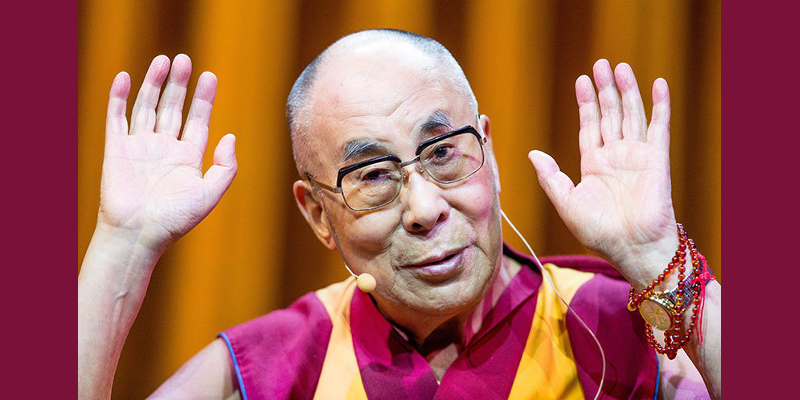
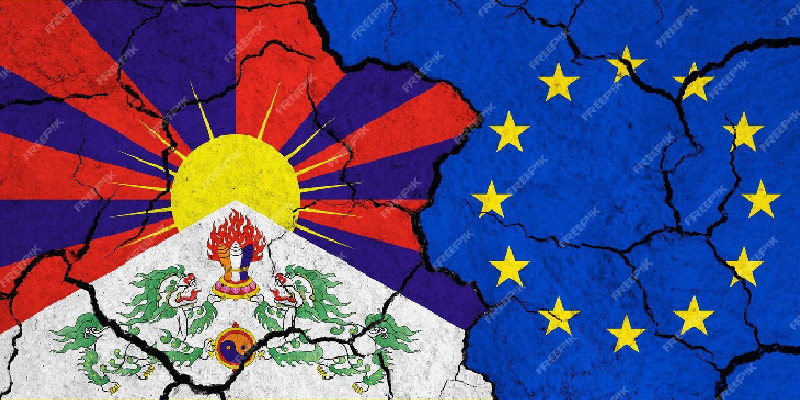
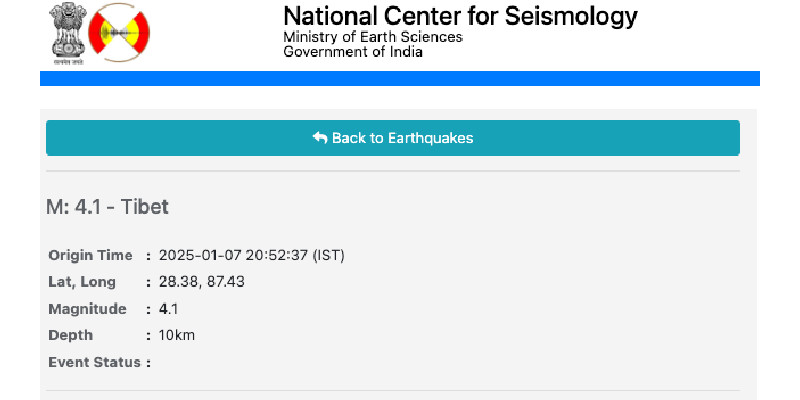
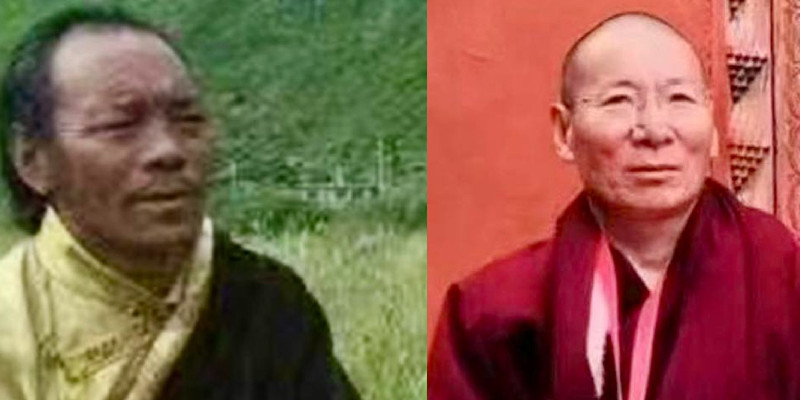
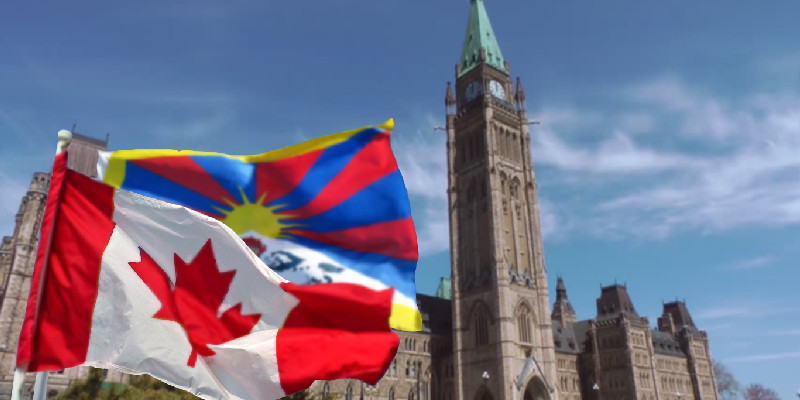

Leave a Reply